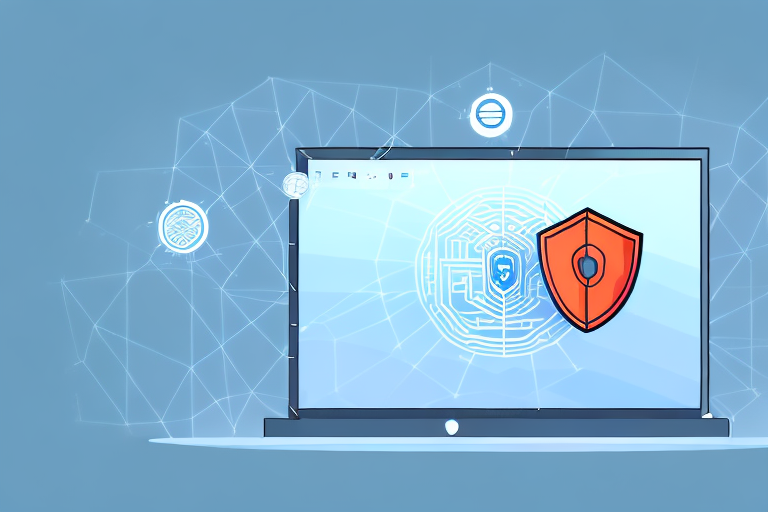Fortinet Acquires Next DLP Strengthens its Top-Tier Unified SASE Solution
Read the release
NIST 800-53 is a comprehensive guide that provides organizations with a framework for managing and securing their information systems. It is a publication of the National Institute of Standards and Technology (NIST), a non-regulatory agency of the United States Department of Commerce. NIST 800-53 is widely recognized as a leading cybersecurity standard and is used by organizations around the world to protect their sensitive information.
In this article:
NIST 800-53 is a set of security controls and guidelines that help organizations manage the risks associated with their information systems. These controls are designed to address various aspects of cybersecurity, including access control, incident response, and network security. By implementing the controls outlined in NIST 800-53, organizations can establish a solid foundation for protecting their information assets.
The development of NIST 800-53 can be traced back to the Federal Information Security Management Act (FISMA) of 2002. FISMA mandated that federal agencies implement information security programs and adhere to specific security requirements. NIST was tasked with developing a set of guidelines and standards to assist federal agencies in meeting these requirements. The result was NIST 800-53.
As the digital landscape continued to evolve, it became clear that a standardized approach to information security was necessary. The complexity and sophistication of cyber threats were increasing, and organizations needed a reliable framework to safeguard their sensitive data. NIST 800-53 emerged as a response to this growing need.
With input from industry experts, government agencies, and academia, NIST developed a comprehensive set of security controls and guidelines. These controls were carefully crafted to address a wide range of potential threats and vulnerabilities, ensuring that organizations could effectively protect their information systems.
The primary purpose of NIST 800-53 is to provide organizations with a comprehensive set of security controls that can be tailored to meet their specific needs. The controls are based on best practices and are intended to help organizations address the ever-evolving threats to their information systems.
By implementing the controls outlined in NIST 800-53, organizations can establish a robust security posture. They can proactively identify and mitigate potential risks, ensuring the confidentiality, integrity, and availability of their information assets. This not only protects the organization's sensitive data but also helps to build trust with customers, partners, and stakeholders.
NIST 800-53 also serves as a basis for assessing the security posture of organizations and ensuring compliance with applicable regulations. By adhering to the guidelines and controls outlined in NIST 800-53, organizations can demonstrate their commitment to information security and meet the requirements set forth by regulatory bodies.
Furthermore, NIST 800-53 promotes a risk-based approach to information security. It encourages organizations to prioritize their security efforts based on the potential impact of threats and vulnerabilities. This approach allows organizations to allocate their resources effectively and focus on the areas that pose the greatest risk to their information systems.
In conclusion, NIST 800-53 plays a crucial role in helping organizations protect their information systems from cyber threats. By providing a comprehensive set of security controls and guidelines, NIST 800-53 enables organizations to establish a strong security foundation, comply with regulations, and effectively manage risks.

|
NIST 800-53 is a comprehensive framework that organizations can use to effectively manage their cybersecurity risks. It is structured around a set of control families, each addressing a specific aspect of information security. These control families include access control, configuration management, and media protection, to name just a few.
Access control is a critical aspect of information security, focusing on granting and restricting access to information systems. By implementing access control measures, organizations can ensure that only authorized individuals can access sensitive data and resources, reducing the risk of unauthorized access and potential data breaches.
Configuration management is another important control family in NIST 800-53. It ensures that information systems are properly configured and maintained, reducing the risk of vulnerabilities and ensuring the systems function optimally. By implementing configuration management controls, organizations can establish a baseline configuration for their systems and ensure that any changes are properly authorized and documented.
Media protection is yet another control family in NIST 800-53 that organizations should pay attention to. It focuses on safeguarding physical and digital media that contain sensitive information. By implementing media protection controls, organizations can prevent unauthorized access, loss, or theft of media, reducing the risk of data exposure.
Each control family in NIST 800-53 is further divided into individual controls that provide specific requirements for protecting information systems. These controls cover various security domains, including identification and authentication, system and communications protection, and security assessment and authorization.
NIST 800-53 contains over 900 individual security controls that organizations can implement to protect their information systems. These controls are categorized based on their intended purpose and cover a wide range of security domains.
Identification and authentication controls, for example, focus on verifying the identity of users and ensuring that only authorized individuals can access information systems. By implementing strong identification and authentication controls, organizations can prevent unauthorized access and protect sensitive data from being compromised.
System and communications protection controls aim to safeguard the integrity, confidentiality, and availability of information systems and their communications. These controls include measures such as firewalls, intrusion detection systems, and encryption, which help protect against unauthorized access, data breaches, and network attacks.
Security assessment and authorization controls are crucial for ensuring that information systems meet the necessary security requirements. These controls involve conducting regular assessments, vulnerability scanning, and penetration testing to identify and address any potential weaknesses or vulnerabilities in the systems.
By implementing the extensive range of controls provided in NIST 800-53, organizations can establish a robust security posture and minimize the risk of cyber threats. However, it is important to note that implementing all controls may not be necessary or feasible for every organization. The selection and implementation of controls should be based on an organization's specific needs, risk profile, and available resources.
The control families in NIST 800-53 are designed to address specific areas of cybersecurity, providing organizations with a structured approach to managing their information security risks.
One of the key control families is access control, which focuses on granting and restricting access to information systems. Access control measures help ensure that only authorized individuals can access sensitive data and resources, reducing the risk of unauthorized access and potential data breaches. This control family includes controls such as user identification and authentication, access control policies, and user access reviews.
Another important control family is configuration management, which ensures that information systems are properly configured and maintained. Proper configuration management reduces the risk of vulnerabilities and ensures that systems function optimally. Controls in this family include configuration baselines, change management processes, and configuration monitoring.
Incident response is also a critical control family in NIST 800-53. It outlines procedures for detecting, responding to, and recovering from cybersecurity incidents. By implementing incident response controls, organizations can minimize the impact of security incidents, mitigate risks, and restore normal operations swiftly. Controls in this family include incident detection and reporting, incident response planning, and incident recovery and lessons learned.
Each control family in NIST 800-53 provides a set of controls that organizations can implement to enhance their security posture. By selecting and implementing the appropriate controls from each family, organizations can tailor their cybersecurity approach to their specific needs and effectively manage their information security risks.
NIST 800-53 plays a crucial role in cybersecurity by providing organizations with a standardized framework for managing their information security risks. By following the guidelines and controls outlined in NIST 800-53, organizations can establish a strong security foundation that helps protect their sensitive information from unauthorized access, disclosure, and disruption.
NIST 800-53 provides organizations with a systematic approach to managing their cybersecurity risks. By implementing the controls and guidelines outlined in NIST 800-53, organizations can identify and prioritize their information security risks, implement appropriate security controls, and continuously monitor and assess their security posture. This proactive risk management approach helps organizations stay ahead of potential threats and reduces the likelihood of security incidents.
Compliance with cybersecurity regulations and standards is a critical aspect of information security. NIST 800-53 serves as a benchmark for organizations to assess their compliance with relevant cybersecurity requirements. By implementing the controls and guidelines outlined in NIST 800-53, organizations can demonstrate their commitment to cybersecurity best practices and ensure compliance with applicable regulations.
Implementing NIST 800-53 can be a complex process involving multiple steps and considerations. However, the benefits of implementing NIST 800-53 far outweigh the challenges. By following a systematic approach and leveraging the resources provided by NIST, organizations can successfully implement NIST 800-53 and enhance their cybersecurity posture.
Implementing NIST 800-53 typically involves several key steps. These include conducting a risk assessment to identify and prioritize security risks, selecting and tailoring the appropriate security controls from NIST 800-53, implementing the selected controls, and regularly monitoring and assessing the effectiveness of the controls. By following these steps, organizations can effectively implement NIST 800-53 and strengthen their security defenses.
Implementing NIST 800-53 can pose various challenges for organizations. Some common challenges include resource constraints, lack of cybersecurity expertise, and the ever-evolving nature of cybersecurity threats. However, organizations can overcome these challenges by seeking external assistance, leveraging automation tools, and continuously educating and training their workforce.
Several organizations have successfully implemented NIST 800-53 and reaped the benefits of enhanced cybersecurity. These case studies provide valuable insights into the practical aspects of implementing NIST 800-53 and highlight the lessons learned from these implementations.
Implementing NIST 800-53 is a continuous learning process. Organizations that have successfully implemented NIST 800-53 have gained valuable insights that can benefit others. Some key lessons learned include the importance of senior leadership support, the need for effective communication and training, and the significance of regular monitoring and assessment. By understanding these lessons, organizations can enhance their NIST 800-53 implementation efforts.
In conclusion, NIST 800-53 is a comprehensive guide that provides organizations with a framework for managing their cybersecurity risks. By understanding the origin, purpose, and structure of NIST 800-53, organizations can effectively implement the controls and guidelines to enhance their security posture. Despite the challenges, implementing NIST 800-53 offers numerous benefits and helps organizations achieve compliance with cybersecurity regulations.
NIST 800-53 is a comprehensive guide developed by the National Institute of Standards and Technology (NIST) that guides organizations through managing and securing their information systems. This publication is widely recognized as a leading cybersecurity standard.
It contains a set of security controls and guidelines designed to help organizations address various aspects of cybersecurity, such as access control, incident response, and network security.
NIST 800-53 is structured around a set of control families, each addressing a specific aspect of information security. Some of these control families include:
Each control family is divided into individual controls. These controls provide specific requirements for protecting information systems across various security domains.
NIST 800-53 provides a standardized framework for managing data security risks. By following the guidelines and controls outlined in NIST 800-53, organizations can establish a strong security posture, protect sensitive information from unauthorized access and disruption, and comply with relevant cybersecurity regulations.
Every NIST 800-53 implementation will differ slightly because all organizations have different needs. However, most organizations follow this process to implement NIST 800-53 controls:

Blog

Blog

Blog

Blog

Resources

Resources

Resources

Resources

